|
With the 2017 release of Sofia Coppola's The Beguiled,
an excellently calculated remake of Don Siegel's 1971 film, I
was reflecting upon the many great female filmmakers that have
emerged over the past 20 years. Coppola (for good reason) has
become a household name, but few others have earned the recognition
of their male contemporaries despite contributing to world cinema
as equally significant.
Here
is a list of A2P Cinema's great female-directed films for each
of the last 20 years.
Two
rules: 1) One film per year since 1997. 2) No director will be
included more then once! (So for example, though a filmmaker like
Claire Denis has made many great films since 1997, only one of
those films will be featured here).
***This
has been updated with the years following 2017.

2025…
Sorry, Baby
Directed by Eva
Victor , United States
https://www.imdb.com/title/tt32843349
Flawless
play on tones and everything in this film just comes together
beautifully. Everything feels genuine here and it’s remarkable
how the film takes the subject matter of coping with trauma in
a way that never takes itself too seriously. There is truth to
this film that is rare and it’s so easy to appreciate what
the filmmaker and cast are achieving here.
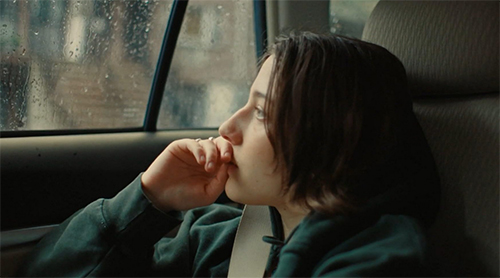
2024…
Good One
Directed by India
Donaldson , United
States
https://www.imdb.com/title/tt30319516
India
Donaldson's 2024 film Good One masterfully uses subtlety to express
the dynamics working. There is alot of feeling underneath what
we see and hear from the characters but it is still observed through
the understated approach of Donaldson as well as her cinematographer
and of course her performances - carried by a seemingly effortless
Lily Collias. There are some narrative shifts (one obvious change)
and the beauty of the film is how it portrays Collias response
to these shifts.
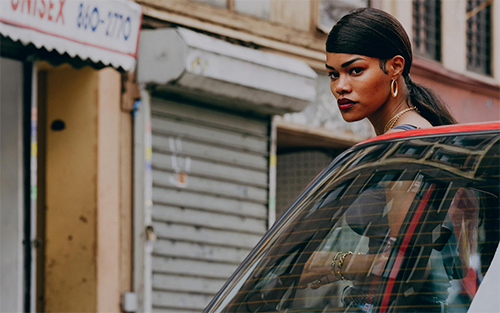
2023…
A Thousand and One
Directed by A.V.
Rockwell, United
States
https://www.imdb.com/title/tt12427158
Teyana Taylor
is a revelation in this deeply powerful film. A Thousand and One
brings multiple levels of emotion and its great achievement is
how insightful it is into the lives of its characters, lead by
a remarkable lead performance from Taylor.
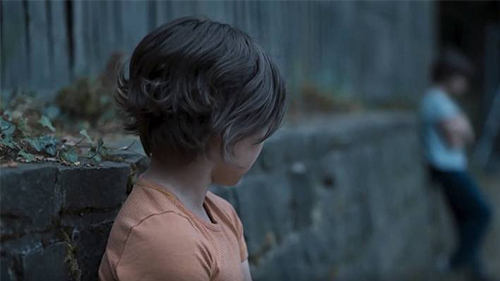
2022…
Playground
Directed by Laura
Wandel, Belgium
https://www.imdb.com/title/tt11087960
Playground
takes on a world view of childhood and the result is powerful
and touching while also being harsh and deeply relateable. The
film literally takes us into the world of its child characters
- both in narrative and viuals as the camera framing is almost
always at the level of its lead characters. This is the feature
debut from Laura Wandel and its a remarkable achievement.
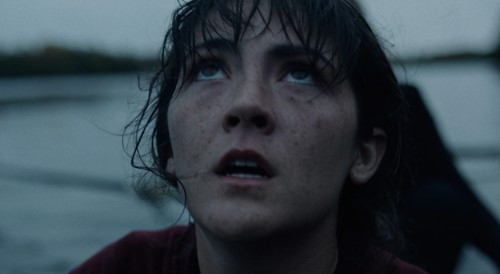
2021…
The Novice
Directed by Lauren
Hadaway, United States
https://www.imdb.com/title/tt11131464
“Remember
your competition”. This film is as good as I've seen
in psychologically examining compulsion and obsessive desire.
Directed by first time feature filmmaker Lauren Hadaway who delivers
a creative design of images and sounds with a powerful leader
performance by Isabelle Fuhrman.
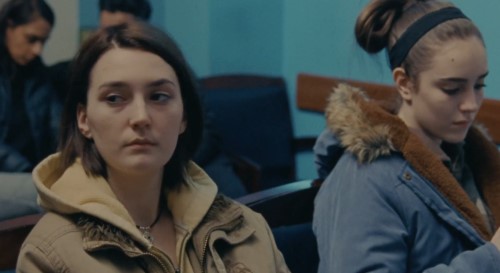
2020…
Never Rarely Sometimes Always
Directed by Eliza
Hittman, United States / United Kingdom
https://www.imdb.com/title/tt7772582
Terrific
performances in this deeply realistic film, but it is Eliza Hittman's
subtly masterful use of the environment that propels this film
and nothing here is ever forced or preaching a social agenda -
it all just exists within the characters space. Great film and
one you'll think about long afterwards!

2019…
A Beautiful Day in the Neighborhood
Directed by Marielle Heller, United States
https://www.imdb.com/title/tt3224458
Beautifully blending melodrama and sentimentality in such a skillfully
crafted and completely unforced manner, A Beautiful Day in
the Neighborhood emerges as a cinematic inspiration. It is
crafted in ways you don't expect (mixing both narrative and dreamlike
storylines both in and out of the Mister Rogers Neighborhood universe).
Director Marielle Heller is wisely less interested in making this
a biopic instead the film cleverly touches on themes expressed
in the original television program. This is not easy to explain
but its just a film that I love. I love the feeling it leaves
me with and I will love rewatching this many times!
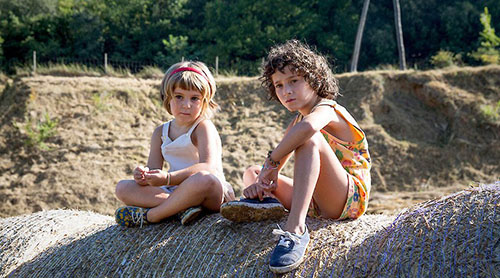
2018…
Summer 1993
Directed by Carla
Simón, Spain
https://www.imdb.com/title/tt5897636
Summer 1993 is the feature filmmaking debut from Carla
Simón and it's a loose autobiography about an orphan who
lives with her uncle after her mothers death. The films strength
(besides a phenomenal breakout performance from Laia Artigas)
is how unsentimental and gentle it is made.

2017…
Raw
Directed by Julia Docournau, France / Belgium / Italy
http://www.imdb.com/title/tt4954522
What
elevates Raw is the unique manner it brings up so many
ideas (be it socially, sexually, or psychologically). French filmmaker
Julia Ducournau clearly is using this character and film as an
erotic meditation on primal hungers. It is a gruesome work made
with a stylish almost exploitative approach, Raw also has
some wonderful richness and narrative surprises that make it a
memorable and chilling film.
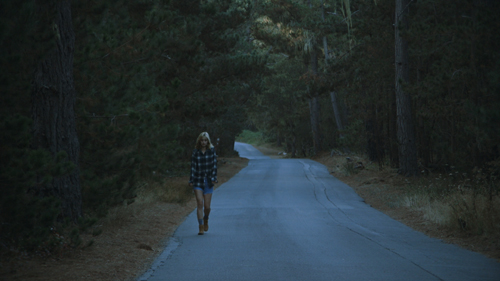
2016…
Always Shine
Directed by Sophia Takal, United States
http://www.imdb.com/title/tt4392770
Sophia Takal's
study of a two aspiring LA actresses is less concerned with satire
then it is on feminine identity. It develops tension before a
tonal shift in the second half. Its easy to think of Ingmar Bergman's
Persona or David Lynch's Mulholland Drive here,
but Takal has a voice with this tense and unsettling film.
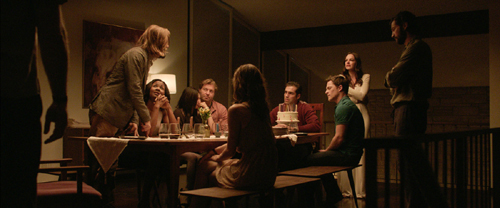
2015… The
Invitation
Directed
by Karyn Kusama, United States
http://www.imdb.com/title/tt2400463
Beautifully
paced and building, The Invitation is an intelligent and
layered character ensemble. Karyn Kusama did well with Diablo
Cody's script in the underrated genre-piece Jennifer's Body.
Here she's working on another level and establishes herself as
a significant artist. There is such an intensely building atmosphere
of dread and its a thought provoking film.
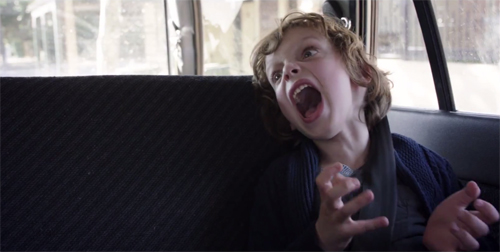
2014… The
Babadook
Directed
by Jennifer Kent, Australia
http://www.imdb.com/title/tt2321549
Not
a perfect film but The Babadook is a film that I absolutely
adore. Its stunning visuals are filled with influences of early
cinema and classic fairy tales. You are never really sure what
is real here and the film never gives direct answers. Like the
greatest horror films, The Babadook is carried by its chilling
atmosphere but there are also some terrific psychological performances
by the mother and son protagonists (played by Essie Davis and
Noah Wiseman). This will stand as one of the great horror films
of its decade!
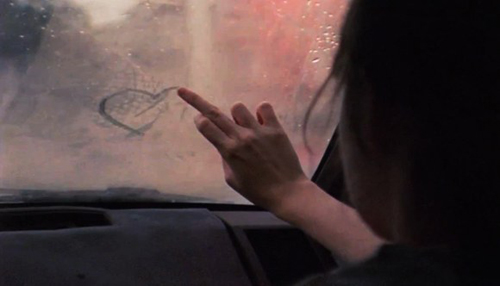
2013…
Sun Don't Shine
Directed by Amy Seimetz, United States
http://www.imdb.com/title/tt2023714
Amy
Seimetz's eerie feature debut, Sun Don't Shine is excellent
in the way it absorbs through it's mood and tone. There are moments
both menacing and tender. Most of the emotional tension and panic
is bottled and building. The central performances deserve much
of the credit for how effective this is, with Kate Lyn Sheil especially
terrific - in both her quiet expressions and emotional rage.
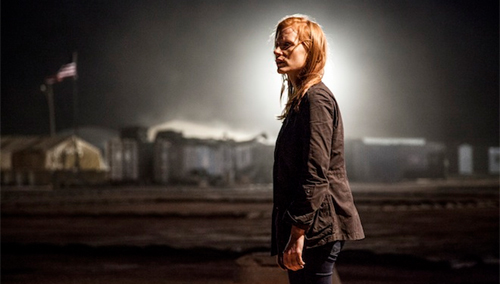
2012… Zero
Dark Thirty
Directed by Kathryn Bigelow, United States
http://www.imdb.com/title/tt1790885
Kathryn
Bigelow's 2009 film The Hurt Locker was among the best
films of the previous decade and her follow-up Zero Dark Thirty
is another brilliant achievement in filmmaking. Bigelow has such
control of the film and its focus lies solely of it's craft -
both in the technique and the honest characterization. With a
phenomenal lead performance from Jessica Chastain, Zero Dark
Thirty has a perfect narrative rhythm of character and action.
This is what made The Hurt Locker so successful and here
the lead performance is even more notable. Zero Dark Thirty
is gripping without forcing the issue or telling its audience
how to react and feel. This is old-fashioned filmmaking at its
best.
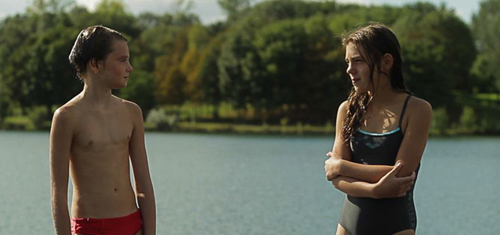
2011… Tomboy
Directed by Céline Sciamma, France
http://www.imdb.com/title/tt1847731
Tomboy
opens to an expressive shot of a girl being held up by her father
as they drive. Seemingly free from the conformity of the world
in this moment, as sounds of the wind are evident in the backdrop.
The girl is quickly returned to society but this moments lingers
throughout this remarkably touching and heartfelt masterpiece.
Tomboy is that rare film that evokes layered human depth
all with a seemingly effortless touch. So many thoughts and ideas
are evoked but they seem to be raised through the simplicity and
naturalism of the filmmaking here. Celine Sciamma's directs the
film with a delicate compassion that transcends any direct messages
it may provoke. This of course is heightened by the incredible
performances, mostly notably from the two young girls Zoe Heran
(playing Laura) and Malon Leavanna as her younger sister. The
moments these two share together on screen are simply magical.
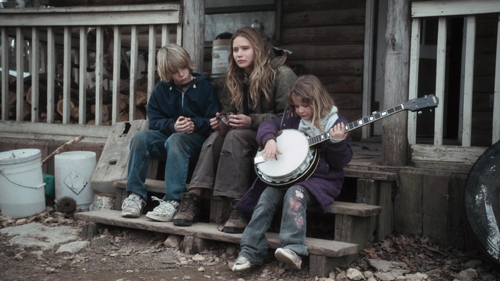
2010… Winter's
Bone
Directed by Debra Granik, United States
http://www.imdb.com/title/tt1399683
Debra
Granik's Winter's Bone is that rare film that finds a spiritual
sense of inspiration while being both brutal and sensitive. The
films lyrical form is masterful, even indirectly echoing shades
of the great Yasujiro Ozu or more distinctly the gritty masterpieces
of the 1970s. It's great strength is the lack of self-awareness
instead focused on it's poetic tone, realist humanism, and bleak
landscapes (of which the culture and characters of the film are
reflected upon). Of course the core of the film is that of it's
inspirational heroine Ree Dolly - flawlessly performed by Jennifer
Lawrence. Lawrence delivers a complex truth in the way she balances
Ree's vulnerability with moments of courage and at times brutality.
She is self-sacrificing of personal desire and determined - as
she follows her decisions against all pain or struggles with profound
internal strength and resilience. Winter's Bone is a beautifully
layered film that grows with repeat viewings.
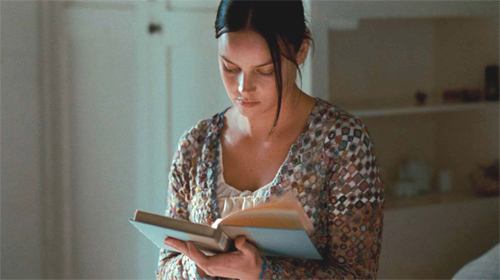
2009…
Bright Star
Directed by Jane Campion, Australia
http://www.imdb.com/title/tt0810784
Master
of the innovative and cinematic language-defining films Sweetie
(1989) and An Angel at My Table (1990), Campion gives the
period costume formula a rare sense of feeling. Above all this
is a film that you can feel (be it in moments of beauty, of heartbreak,
of romance or of humor). The production values (sets, costumes
and most especially the cinematography) are extraordinary and
the performances are strong (notably a career-defining role from
Abbie Cornish who is already well acclaimed in her native Australia
for performances in Somersault and Candy). Telling the story of
a love affair between a young Romantic poet John Keats played
by Ben Whishaw and his next-door neighbor Fanny (played by Cornish),
Bright Star is a film that requires the lyrical touch of
a gentle and detailed artist with a great understanding of feelings
and mood. In addition, one of the unique qualities that sets this
film apart from the standard period drama is Campion's trademark
visual camera framing and storytelling. There is no doubt Campion
can frame a shot and her manner of storytelling gives the typical
period romance a refreshing and quiet beauty.
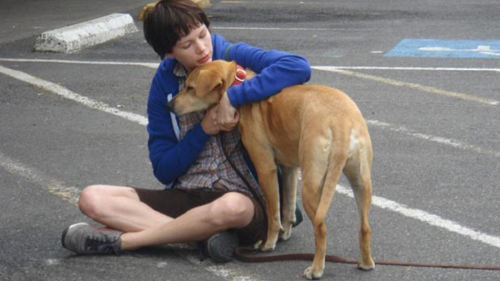
2008…
Wendy and Lucy
Directed by Kelly Reichardt, United States
http://www.imdb.com/title/tt1152850
Kelly Reichardt
follows up her excellent 2006 film Old Joy with this beautiful
and heartbreaking film that shares much of the same minimalist
style and social reflections. With Wendy and Lucy, Reichardt
takes us in even closer emotionally and it is amazing how much
she achieves with such a simplistic touch. Simple yet carefully
made the film makes great use of its location (Pacific Northwest)
and its parallel tracking shots (which contrast each other in
the opening and closing of the film). Michelle Williams is nothing
short of superb as a vulnerable woman caught in the devastating
realities of poverty in American society. To see Williams and
her her joy, hope, sadness, fears, and uncertainty effortless
converge without sentiment in the final moments is truly a masterful
performance. Wally Dalton gives a touching performance as the
security guard who befriends Wendy, and of course it is also a
pleasure to Old Joy collaborators Will Oldham and Lucy the dog
(played by Reichardt's own dog) return as well as an effectively
creepy cameo by cult horror director Larry Fessenden. Wendy
and Lucy is a simplistic film with real unforced texture.
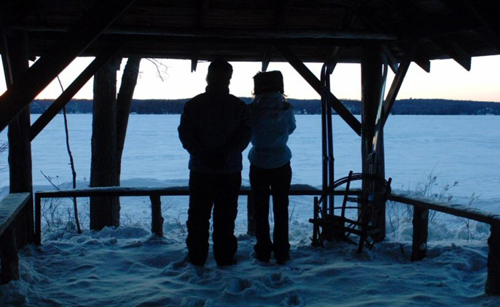
2007… Away
From Her
Directed by Sarah Polley, Canada
http://www.imdb.com/title/tt0491747
Written
and directed by actress Sarah Polley in her debut, who adapted
the film from a short story by Alice Munro ("The Bear Came
Over the Mountain"), Away From Her is a heartrending
film of memory, and of marriage. The film is beautifully structured
like a poem, drifting in a non-linear journey of the past and
present. The film opens with a series of shots that are poignantly
rendered, as we subtly observe three different perspectives of
a couple cross-country skiing (together, on separate paths, and
then together again). Polley effectively plays with time, skillfully
heightening the films treatment of memory- much in a similar style
of the films co-producer Atom Egoyan (who directed Polley in his
1997 masterpiece The Sweet Hereafter). Only 28 years old,
Polley shows the grace and wisdom of a filmmaker far ahead of
her age in the way she finds the perfect little details of a 44-year
old marriage. A love that after 44-years has grown stronger through
memory. So what happens when Fiona (played by Julie Christie in
a career-defining performance) suffers Alzheimer's disease? Can
their love persevere? When Fiona tells her husband Grant that
she "is beginning to disappear", she agrees to be submitted
to Meadowlake Nursing Home, a place that seems destined to erase
memories of the past, even a 44-year marriage. By Meadowlakes
policy (which as a nurse states is probably more convenient for
the staff), Grant must be away from Fiona for 30 days. The films
title seems to reflect both husband and wife, as they are taken
away (he from her, and her from herself) from the loss of shared
memory. Carrying the emotional weight of the film without an ounce
of sentiment is the incredible performance from the always reliable
Julie Christie. As Fiona, Christie is heart-wrenching, but in
a way that is perfectly subtle and underplayed. Away From Her
is an incredibly moving film. It is heartbreakingly sad, but ultimately
hopeful in its graceful observation of acceptance, and of selfless
love.
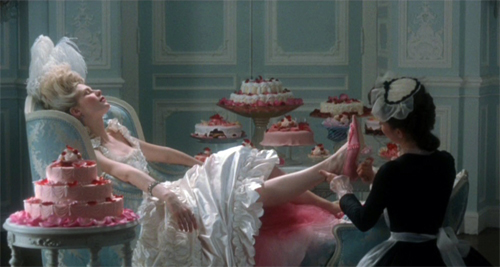
2006…
Marie Antoinette
Directed by Sofia Coppola, United States
http://www.imdb.com/title/tt0422720
Marie
Antoinette is very representative of Sofia Coppola's cinematic
style and themes. This is her third film and each of them have
equally dealt with young woman trapped in a foreign world of isolation,
loneliness, and boredom. While her other features were (at least
to me) self-conscious and somewhat dull attempts of recreating
Michelangelo Antonioni or Wong Kar-Wai, Marie Antoinette
is a wonderful personal expression of an artist. Here Coppola
captures the poetic expression of her imagery and sounds in a
spirit that evokes the groundbreaking American pioneers of the
1970s (such as her father Francis Ford Coppola, or more specifically
Terrence Malick). While not breaking cinematic grounds with this
film, Coppola isn't conforming within any boundaries either, and
the result is an epic film of artistic achievement with a free
and personal vision. I loved this film in every way. I think because
above all, it is one of feeling. Coppola is less interested in
ideas (be it political, historical, or psychological). Her interest
is in mood, in gestures, tones, themes, and sensibilities. Those
looking for intellectual or historic depth may be left disappointed,
because this is a film at its best when playful and silly. That
is not to say the film is without meaning and importance (or focus).
The film distances the viewer from the past and period drama through
modern effects (such as the unexpectedly non-distracting new wave
music, or the removing of language and accents), Coppola ultimately
captures an emotional truth. At its core this modernized approach
expresses the playful spirit of a young woman's emotional and
physical state. A dreamlike world of being entrapped into an unfamiliar
environment of loneliness, and the longing for teenage freedom
and possession (as well as rebellion). Often dialogue is never
needed here. Through dazzling visuals, set designs, costumes,
and makeup Marie Antoinette pitch-perfectly evokes this
emotional expression (of which is clearly very personal to Coppola
as a filmmaker, who can certainly make some parallels). Based
on a sympathetic biography of Maria Antoinette, Coppola is deeply
compassionate towards her. Ultimately this is a film of Coppola's
key expression, which is that of a lonely, imprisoned girl who
retreats to her own private world of imagination but is destroyed
by the uncontrollable desires within (being a young woman). Essentially
Coppola is presenting this film as a dreamlike fantasy world through
Marie Antoinette's own imagination as she grows from a teenager
to a woman. This is why Coppola films the final moments of Marie
Antoinette as she does. While on a narrative level it may
be flawed, I find her ending perfectly fitting and the final shot
a beautifully expressive and essential image that defines the
emotional and physical state the character. See this film - TURN
IT UP LOUD and let the cinematic expirence take you away!!
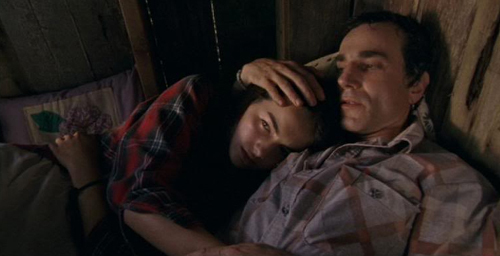
2005…
The Ballad of Jack and Rose
Directed by Rebecca Miller, United States
http://www.imdb.com/title/tt0357110
Not
everything works in this film but The Ballad of Jack and Rose
is thoughtful and very touching. Its the third film from Rebecca
Miller, daughter of playwright Arthur Miller, and here she casts
her husband Daniel-Day Lewis as the father of an isolated and
confused 16-year-old daughter (played by Camilla Belle). The outstanding
performances from Lewis and Belle really make this such an engaging
film, and Miller makes great use of location and music (as well
as time, which is reflective within the core narrative of the
story).
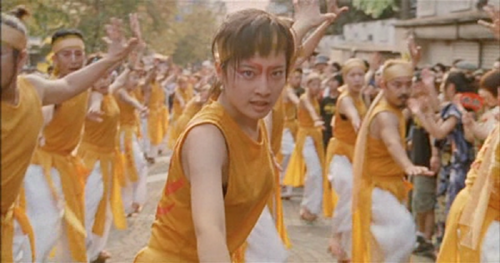
2004…
Sahara
Directed by Naomi Kawase, Japan
http://www.imdb.com/title/tt0363060
Naomi
Kawase's astonishing 2003 film Shara is a truly great cinematic
experience. Indeed to see this film is experience it - both in
the way that it is detached yet intimate all at once. The film
features a prominent use of handheld camera work and long handheld
tracking shots as early as the visually atmospheric opening scene.
These long lingering shots and camera movements heighten the atmosphere
and feeling of the film to give it a rare energy that the narrative
can not provide. Kawase has a very unique and personal approach
to filmmaking often blending autobiography, documentary and fiction
as one. Shara is set in Kawase's hometown of Nara (Japan's
capital city in the 8th and 9th centuries) tells the story of
family loss when a twin brother suddenly disappears one summer
day. This film is one of grieving. The healing arrives in a devastating
nearly 10-minute dance sequence that seems both improvised yet
carefully composed. Either way it is full of energy and carries
with it a touching emotion despite its simplicity. Kawase has
created a marvelously unforgettable moment of cinematic rhythm
and emotion. Shara, like many of Kawase's films, rings
emotional and stylistic truth. While I would say there is an experimentalist
approach, this is not a film made out of a plot or a genre, but
rather one of people and emotions.
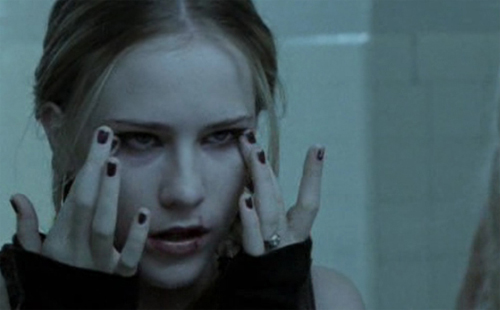
2003…
Thirteen
Directed by Catherine Hardwicke, United States
http://www.imdb.com/title/tt0328538
Where
Larry Clark's exploitation films of troubled kids fails is where
this one succeeds to me. Both go for a sense of realism but what
transcends Thirteen is expressed in the small quiet moments
behind the "shock". The film finds a truth in the way
it details the young girls possession of their own body, as well
as the mothers struggle to find the balance between being a best
friend or a mother. All this comes to a powerful conclusion in
the films heartfelt final moments shared with mother and daughter,
finally finding the deep connection needed (through a simple gesture
of just holding one another). Credit to the films outstanding
performances: Holly Hunter (as the mother), Evan Rachel Wood as
the daughter, and Nikki Reed (who co-wrote the film when she was
13 years old) as the friend. Thirteen is an honest film
that expresses alot of internal emotions (capped off beautifully
in a final freeze frame shot that recalls the way Francois Truffaut
masterfully expressed the adolescent of the young male in the
classic 400 Blows). A great film!

2002…
Trouble Every Day
Directed by Claire Denis, France
http://www.imdb.com/title/tt0204700
With
a masterful career of films noted for their eroticism and meditative
use of colors, sounds, textures, it is perhaps surprising that
Trouble Every Day might be the most defining of its filmmaker.
Here Denis adopts gene elements to find her trademark cinematic
expressions of the human flesh and of blending or contrasting
the brutally wicked with the hopefully joyous. The result is one
of the most seductive, disturbing and hypnotic films of the last
20 years. It has gone on to be recognized as one of the early
films of the New French Extremity, but that is hardly Denis' aim,
making this part of the reason its such a fascinating achievement.
Above all Trouble Every Day succeeds as a spiritual meditation
on the damage of lust and the chaos stimulated by sexual feelings
- all made with the slow poetic touch of a master filmmaker.
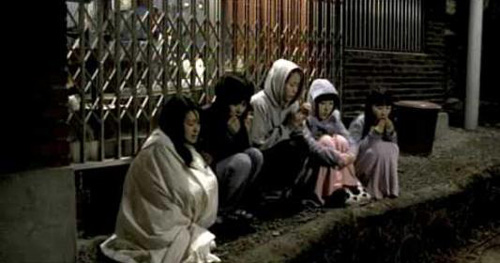
2001…
Take Care of My Cat
Directed by Jeong
Jae-eun, South Korea
http://www.imdb.com/title/tt0296658/
Take
Care of My Cat opens with a group of five young friends celebrating
their graduation. Within a moment we are taken out of this joyful
celebration of youth and into the world of early adulthood. A
world that grows far more complex and ultimately begins to divide
friendship. Take Care of My Cat is an emotionally captivating
film that takes on many layers despite being made with a master
touch of simplicity. What could have been forceful or melodrama,
becomes something beautiful and natural through the minimalist
approach by Korean filmmaker Jeong Jae-eun, in his debut feature
film. The emotions, expressions, and layers of the film are not
explained, but rather they speak for themselves in a way that
recalls the mastery of Yasujiro Ozu. The film is simplistic in
that it does not rely on plot, yet there is a complexly structured
depth to the film that allows the viewer to reflect upon and appreciate
afterwards. We understand these characters experiences and we
share in their humanity. The performances by the five women are
each excellent, but it is Bae Doo-Na that is especially great.
As Tae-hee, Bae finds herself alone and alienated from love and
from family, always drifting into private thought. It is her friends
that give her the connection and support she needs and Tae-hee
struggles to reunite two of the friends that are drifting from
each other (Hae-joo, an ambitious career-woman who’s moved
to Seoul and Ji-young, a depressed orphan living in a broken down
shack with her grandparents). Within the lives of these five woman
is the cat Tee Tee who was found in an alley by Ji-young. Tee
Tee moves through the hands of each character, becoming a reflection
of their lives. Another minimalist expression of the film is the
recurring use of cell phones and text messages, which serve to
attempt to connect the friendship as it slowly drifts further
apart. The cinematography of Take Care of My Cat is extraordinary,
specifically in the way (without being forcefully “pretty”)
it captures beauty and sadness in the most authentic manner. Take
Care of My Cat is just a lovely film. I can not praise it
enough except to say it is perfect and one of my favorite films!
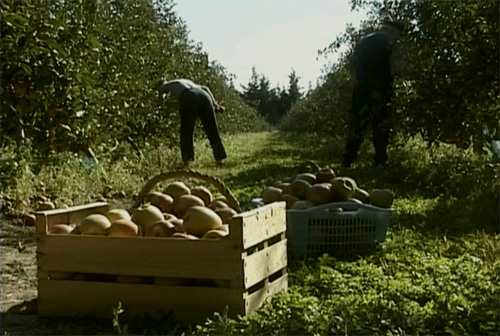
2000…
The Gleaners & I
Directed by Agnes Varda, France
http://www.imdb.com/title/tt0247380
The
Gleaners & I is a wonderful and poetic documentary from
the uniquely talented French filmmaker Agnes Varda. Not only does
Varda capture gleaners, but she is more focused on blending in
those connected to gleaners, and even adds personal touches of
aging, and cinema. What else would you expect from this imaginative
and visionary French New Wave filmmaker! Varda takes the subject
and manages to make this rather standard documentary something
rare and important. Ultimately the film becomes more personal,
and experimenting and even examinations the role of the filmmaker.
The Gleaners & I also manages to be a film that speaks
politically as it essentially represents personal individuality
amongst a society of conformity and expectations. It's pretty
amazing how many levels such a simple film like this has and Varda
should be applauded. The Gleaners & I is equally moving,
interesting, poetic, and fun.
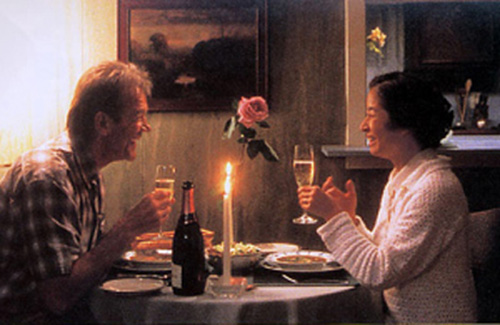
1999… Yukie
Directed by Hisako Matsui, Japan
http://www.imdb.com/title/tt0247713/
Not
a masterpiece by any means, but Yukie is deeply effected
for the levels its aims to reach. Its a deeply touching romance
about an American Korean War veteran (played by Bo Swenson) and
his love for a Japanese nurse (Yukie, played by Mitsuko Baisho).
They marry despite family forbidding. The film ultimately explores
the effects of Alzheimer's disease on a marriage and a family.
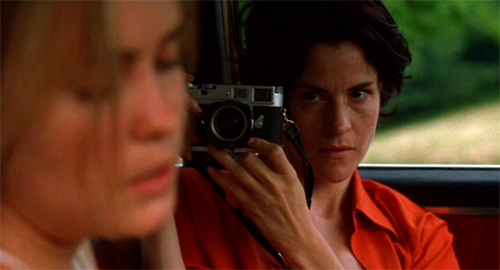
1998… High
Art
Directed by Lisa Cholodenko, United States
http://www.imdb.com/title/tt0139362/
Lisa
Cholodenko's 1998 debut feature High Art showcases her
terrific gifts in finding truth in the characters and the performances.
Of course I think she reached her filmmaking peak with expressing
this gift in the family dynamic on her 2010 film The Kids Are
All Right. But High Art is superb in the way its expresses
characters and their feelings, not always settling for simple
answers or plot points. Those looking for flawless structure and
plotlines will be left with mixed feelings as this is centered
around confused character emotions.
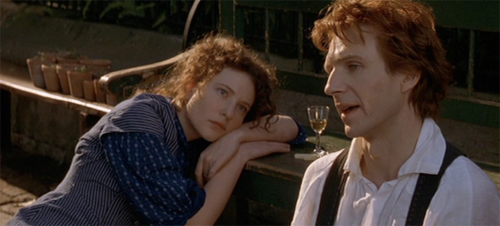
1997…
Oscar and Lucinda
Directed by Gillian Armstrong, Australia
http://www.imdb.com/title/tt0119843/
Oscar
and Lucinda is a charming period epic set in early colonial
Australia centered around the connection of an English priest
(played by Ralph Fiennes) and the owner of a Sydney glassworks
(played by the great Cate Blanchett in her first major screen
performance), both of whom share a love for gambling. The films
charm and wit comes from the quirky chemistry of its excellent
leads. The film offers up lots of thoughts and ideas and uses
significant visual symbols as symbols to express these ideas.
|

